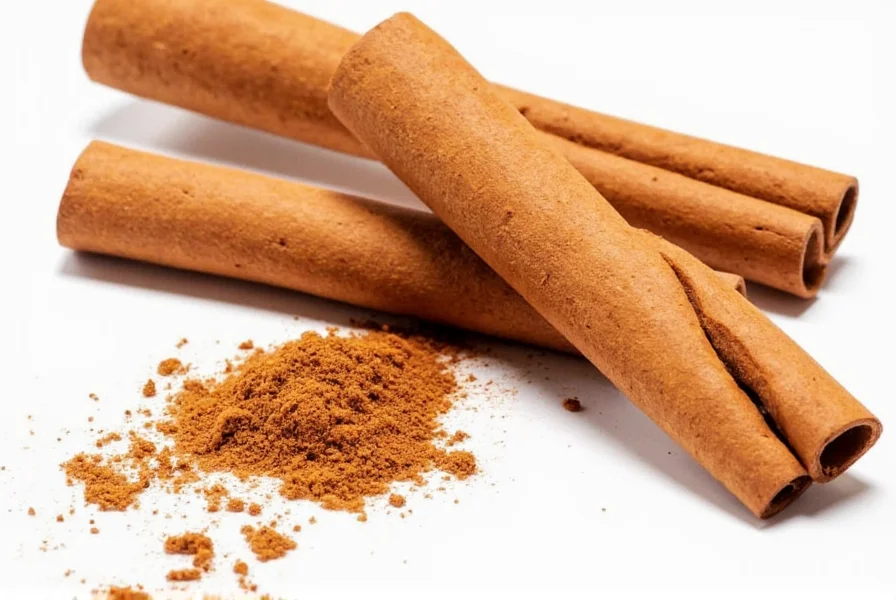When exploring natural approaches to health management, many people investigate cinnamon and chromium due to their potential metabolic benefits. These substances operate through different biological mechanisms and should not be considered interchangeable solutions for health concerns. Understanding their individual properties, research status, and appropriate usage contexts is essential for making informed decisions.
Understanding Cinnamon: More Than Just a Spice
Cinnamon originates from the inner bark of trees belonging to the Cinnamomum genus. The two primary varieties available commercially are Ceylon cinnamon (Cinnamomum verum) and Cassia cinnamon (Cinnamomum cassia). While both share similar flavor profiles, they differ significantly in chemical composition and safety profiles.
Cassia cinnamon contains higher levels of coumarin, a compound that may cause liver damage in sensitive individuals or with prolonged high-dose consumption. Ceylon cinnamon, sometimes called "true cinnamon," contains substantially less coumarin and is generally preferred for regular consumption when seeking potential health benefits.

Chromium: An Essential Trace Mineral
Chromium exists in several forms, but trivalent chromium (chromium 3+) represents the biologically active form found in food and supplements. This essential trace mineral plays a role in insulin signaling and glucose metabolism. Dietary sources include broccoli, barley, oats, green beans, and certain meats.
Chromium deficiency is rare in healthy individuals consuming balanced diets, but certain populations may experience suboptimal levels. The mineral's role in human physiology remains complex, with ongoing research examining its precise mechanisms and optimal intake levels for various health outcomes.
Research Status: Blood Sugar Regulation Claims
Both cinnamon and chromium have been investigated for potential effects on blood glucose regulation, leading to their frequent association in health discussions. However, the scientific evidence supporting their effectiveness varies significantly.
| Substance | Research Status | Key Findings |
|---|---|---|
| Cinnamon | Moderate evidence from short-term studies | Some studies show modest blood sugar improvements; effects appear temporary and dose-dependent |
| Chromium | Inconsistent evidence across studies | Limited evidence for significant blood sugar improvement in non-deficient individuals |
Major health organizations including the American Diabetes Association note insufficient evidence to recommend either cinnamon or chromium as standard treatments for blood sugar management. Most positive findings come from small, short-term studies with methodological limitations. Long-term safety and efficacy data remain scarce for both substances.
Practical Considerations for Consumers
Individuals interested in cinnamon or chromium should consider several important factors before incorporating them into their health regimen:
- Dietary sources first: Obtaining nutrients through whole foods generally provides better absorption and reduces risk of excessive intake
- Consult healthcare providers: Especially important for individuals with diabetes or taking medications that affect blood sugar
- Quality matters: Supplement quality varies significantly; third-party testing can verify contents and purity
- Realistic expectations: Neither substance represents a "miracle cure" for metabolic conditions
Safety and Potential Interactions
While generally recognized as safe when consumed in typical food amounts, both substances present potential concerns at higher doses or in specific populations:
Cinnamon consumption, particularly Cassia variety, may cause liver issues in sensitive individuals due to coumarin content. The European Food Safety Authority recommends keeping daily coumarin intake below 0.1 mg per kilogram of body weight. Chromium supplements may interact with certain medications including antacids, corticosteroids, and nonsteroidal anti-inflammatory drugs.
Pregnant or breastfeeding women, children, and individuals with kidney disorders should exercise particular caution with chromium supplementation. As with any dietary change, monitoring for adverse effects and discussing with a healthcare professional remains essential.
Evidence-Based Approach to Natural Health Solutions
The interest in cinnamon chromium blood sugar research reflects a broader trend toward exploring natural approaches to health management. However, consumers should maintain critical evaluation of health claims and recognize that "natural" does not automatically mean "safe" or "effective."
When researching natural blood sugar regulation supplements, look for studies published in reputable peer-reviewed journals, preferably systematic reviews or meta-analyses that evaluate multiple studies. Be wary of claims promising dramatic results or suggesting these substances can replace conventional medical treatments.
Conclusion
Cinnamon and chromium represent two distinct substances with different biological roles and research profiles. While both have been studied for potential metabolic benefits, current evidence doesn't support their use as primary treatments for blood sugar regulation issues. Their most appropriate application remains as complementary components of a balanced diet and healthy lifestyle, not as standalone solutions for medical conditions.
Individuals considering these substances should prioritize obtaining them through dietary sources when possible, consult healthcare providers before starting supplementation, and maintain realistic expectations about potential benefits. Ongoing research may provide clearer guidance in the future, but for now, evidence-based decision making remains crucial.
Does cinnamon really lower blood sugar levels?
Some short-term studies show modest reductions in blood sugar levels with cinnamon supplementation, particularly in individuals with type 2 diabetes. However, these effects appear temporary and vary significantly between studies. The American Diabetes Association does not currently recommend cinnamon as a standard treatment for blood sugar management due to insufficient evidence of long-term effectiveness.
What's the difference between Ceylon and Cassia cinnamon for health benefits?
Ceylon cinnamon ("true cinnamon") contains significantly less coumarin than Cassia cinnamon, making it safer for regular consumption. While both varieties have been studied for potential health benefits, Cassia's higher coumarin content may pose liver risks with prolonged use. For regular consumption seeking potential health benefits, Ceylon cinnamon is generally recommended due to its better safety profile.
Can chromium supplements help with diabetes management?
Research on chromium supplements for diabetes management shows inconsistent results. Some studies report modest improvements in insulin sensitivity, particularly in chromium-deficient individuals, while others show no significant benefit. Major health organizations do not currently recommend chromium supplementation as a standard diabetes treatment due to insufficient evidence of consistent effectiveness across diverse populations.
Are there risks associated with taking cinnamon and chromium together?
While no major interactions between cinnamon and chromium have been documented, combining supplements increases the potential for unintended effects. Both substances can affect blood sugar levels, potentially enhancing the effects of diabetes medications and leading to hypoglycemia. Individuals taking medications that affect blood sugar should consult healthcare providers before combining these substances.
What's the recommended daily intake for chromium from natural sources?
The recommended daily allowance (RDA) for chromium is 35 micrograms for adult men and 25 micrograms for adult women. These amounts can typically be obtained through a balanced diet containing chromium-rich foods like broccoli, whole grains, green beans, and certain meats. Supplementation is generally unnecessary for individuals consuming varied diets unless specifically recommended by a healthcare provider based on individual needs.











 浙公网安备
33010002000092号
浙公网安备
33010002000092号 浙B2-20120091-4
浙B2-20120091-4